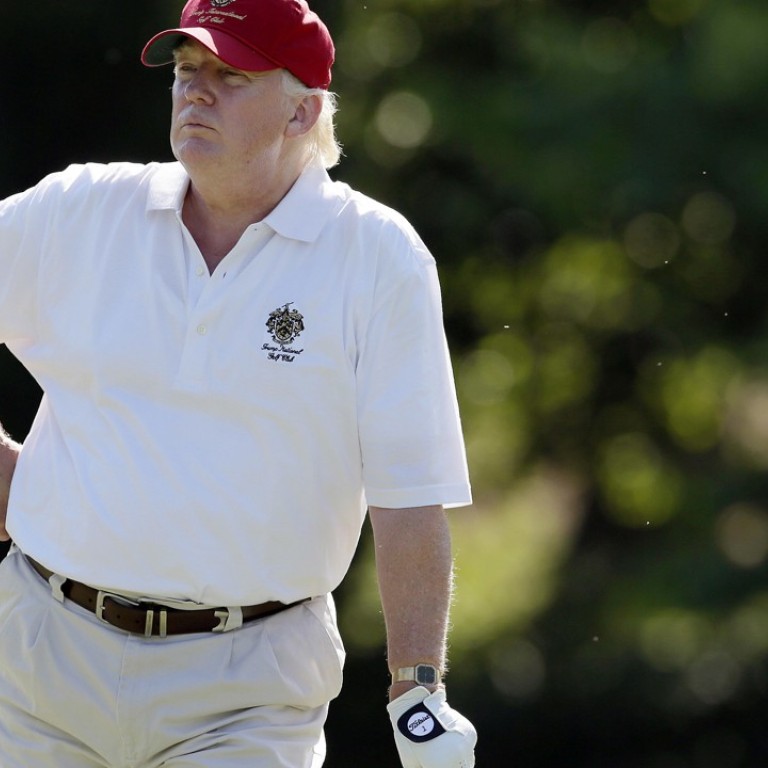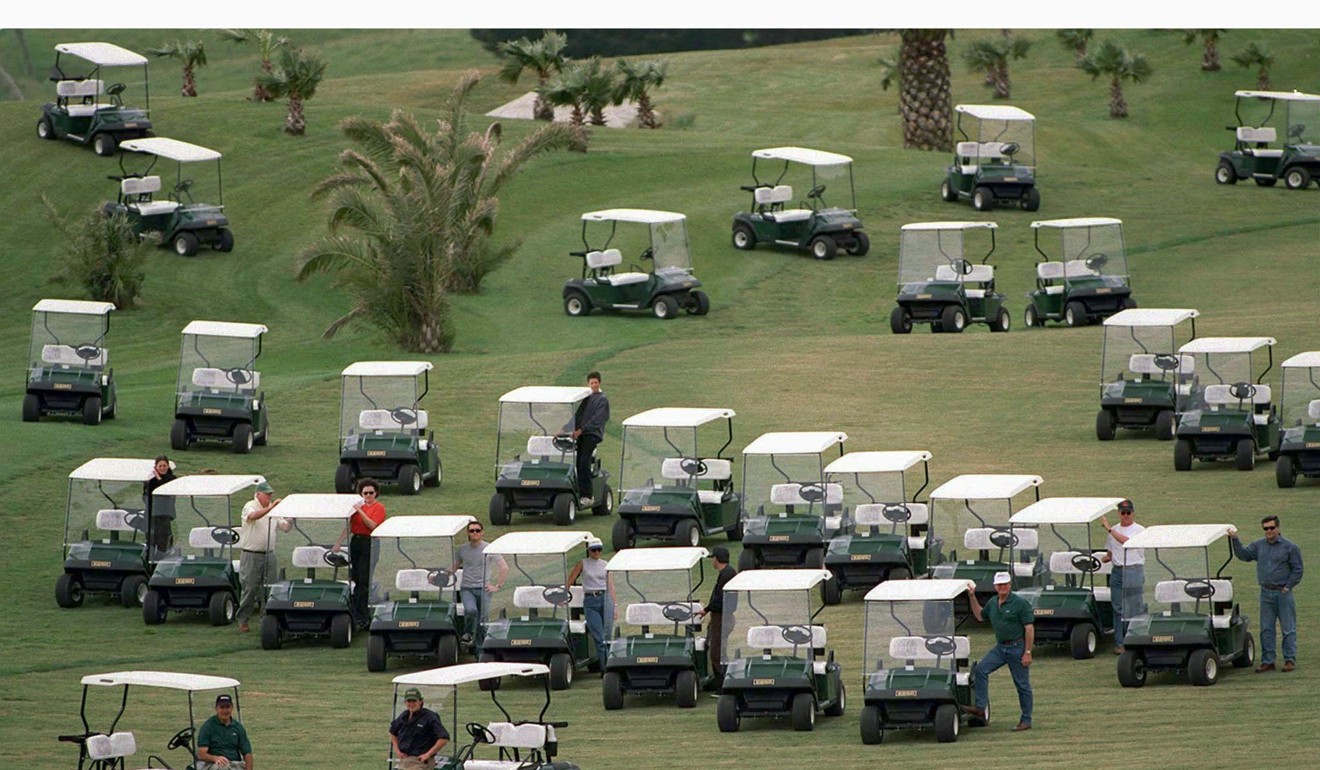
Executive golfing: nothing more than ‘crack cocaine for rich guys’ or corporate money well spent?
Donald Trump is allegedly spending one in five days on a golf course, but top execs around the world would probably swear blind they agree with the US president, and that it’s the perfect venue for talking serious business
I have a problem with golf. No, I don’t mean I have a problem with my swing, or with putting, or with getting out of bunkers. I mean I have a problem with golf itself.
I have issues with the role it plays in business life – and that’s not just because Donald Trump, instead of concentrating on doing a good job of ruling the world’s most important economy, is allegedly spending one in five days on a golf course.
My problem with golf goes back a long way, and is rooted in pure and simple jealousy. As a working-class kid in an English grammar school, it was only the rich kids who played golf. When I could not even afford a bike, they would be spending unimaginably huge sums on swanky equipment, and complaining about losing golf balls that cost as much as a week’s pocket money.
My second emotional encounter with the problem of golf arose when I was a young journalist at the Financial Times. We hacks worked interminable hours, late into most evenings.

The polished and smartly-besuited advertising and marketing staff were gone by 5pm, and most galling of all, they took every Friday off to entertain clients on the golf course.
This stuck in my craw for a lot of reasons – and yes, envy was among them. But it struck me as the ultimate con trick that those marketing guys (and most of them were guys) could convince our hard-nosed management to pay for them to spend Friday’s on a golf course, on the claim that this was indispensable to winning advertising business.
To this day, I fail to see why a day on the golf course was indispensable to the marketers’ success. Except of course as blatant bribery.
That our editor swallowed the con trick was more irritating still. There seems deep inequity in allowing such a small elite band to cordon off the world’s 34,000 golf courses – totalling about seven million acres of the world’s most exquisitely manicured real estate – and reserve entrance to so few (at any one time, only about 70 people can actually be playing on an 18-hole golf course).
As petty, proletarian revenge, I have taken many an illicit early morning jog trespassing over such tranquil courses, surreptitiously relishing the peace and quiet, and always managing to avoid the occasional ball. But this is petty revenge indeed.

Piling insult onto injury, the advertising guys channelled a huge proportion of their generous marketing budgets on sponsoring golf tournaments – to which clients were, of course, invited – and on golfing “away days”. All with a straight-faced claim that this was money well spent.
The fact golf was always the clearest corporate “glass ceiling” of all, effectively barring female staff from the chummy clubbiness at the heart of the marketing industry, was an obvious irritant too.
Even today, according to Golf magazine, over 75 per cent of all serious golfers are men, at an average age of 54, and incomes averaging over US$100,000 a year.
But, of course, you need a high salary to play golf. Putting aside the cost of buying equipment, and “de rigueur” golfing gear, club memberships and green fees cost a fortune.
Here in Hong Kong and Shenzhen, fees range from a mere HK$1.5 million (US$192,000) at Mission Hills to HK$12.5m or more at the exclusive Fanling, Deep Water Bay and Shek O clubs. For most aspiring members, the main barrier is not the fee, but the multiyear waiting lists.
I would like to deny that the huge expense of golf were not an insurmountable barrier to me adopting a golf habit, though of course I would be kidding myself.
In truth, the real barrier is not just the aggregated contempt for the cult, but the lack of time. It takes an average 4.5 hours to play an 18-hole golf course. Add on the time it takes to get to and fro, and I like most mortals can’t ever dream of having so much time free around a full working day. The average US male finds time for half an hour a day of sport and exercise (and women less than half of this), and I am not far from the average.
I have a passing empathy for Malcolm Gladwell, author of ‘Tipping Point’ and a passionate and avowed golf hater, who describes golf as ‘crack cocaine for rich guys’. It is clearly a complex and perplexing addiction
But this does not prevent some of the world’s top business executives, receiving the most breathtaking salaries, from somehow finding the time.
A recent study of the chief executives of the US’s top 1,500 companies found that 363 are regular, serious golfers, playing on average 15 times a year. But 10 per cent of them play golf on average 37 times a year – almost once a week. And one unnamed CEO plays on average 148 times a year – more, even, than Donald Trump.
It puzzles me how such executives can with a straight face justify to their companies’ remuneration committees that their US$10,000 to US$30,000 a day incomes are well spent belting a small white ball around a course.
I have a passing empathy for Malcolm Gladwell, author of “Tipping Point” and a passionate and avowed golf hater, who describes golf as “crack cocaine for rich guys”. It is clearly a complex and perplexing addiction.
Of course, the huge golfing industry (worth over US$70 billion in the US alone, where it accounts for almost 2 million jobs) will be quick to counter the error of my thoughts.
With over 60 million golfers worldwide (and 37 million of them in the US), there are doubtless hundreds of readers who are also appalled by my myopic prejudice.
But I stand my ground. Who can reasonably forgive the chief executive of Bear Stearns, who in the four months ahead of the crash of his company in July 2007 played golf 25 times?
How could he possibly have been concentrating on resolving the crisis engulfing his company when he was three days a week on a New Jersey golf course?
I confess I am full of envious admiration for that lucky band of golf addicts that have persuaded their employers to let them work one fifth of their working week from the fairway of a beautifully manicured golf course.
But can I honestly believe this is good money spent? Can I honestly believe that his contribution to his company is augmented by the fresh air and exercise? Can I believe that corporate productivity is enhanced by the practice. Sorry, I think not.
David Dodwell research and writes about global, regional and Hong Kong challenges from a Hong Kong point of view

